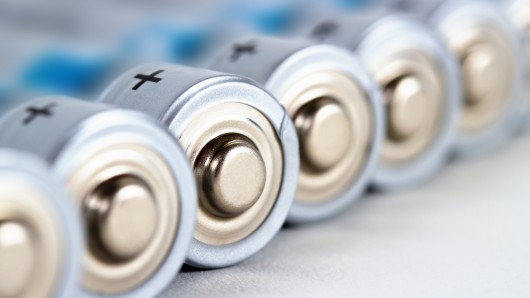Dual-functioning electrolyte improves capacity of long-life batteries
By Nick Lavars
May 4, 2014

A new type of dual-functioning electrolyte developed at ORNL could result in an improved capacity for long-life batteries (Photo: Shutterstock)
The three main components of a battery's makeup: the anode, cathode and the ion-conducting electrolyte, have been long understood to serve separate, independent functions. A team of researchers at the US Department of Energy's Oak Ridge National Laboratory (ORNL) is seeking to challenge this theory, experimenting with a dual functioning electrolyte that supplements the cathode to significantly improve the capacity and longevity of long-life batteries.
In testing the effectiveness of its newly-developed electrolyte, the team worked with a lithium carbon fluoride battery, deemed an ideal test subject for its long life, high energy density and stability. By incorporating a solid lithium thiophosphate electrolyte, the team created a battery chemistry wherein the electrolyte and the cathode worked in cooperation, resulting in a battery capacity 26 percent higher than if they were to function independently.
"As the battery discharges, it generates a lithium fluoride salt that further catalyzes the electrochemical activity of the electrolyte," says Chengdu Liang, Staff Scientist at ORNL and one of the study's authors. "This relationship converts the electrolyte, conventionally an inactive component in capacity, to an active one."
According to the researchers, this new form of cooperative chemistry could add years or even decades to the life of such batteries. The findings hold promise for any application where recharging or replacing a long-life battery can be problematic, such as in pacemakers, keyless systems or remote sensors.
“If you have a pacemaker, you don’t want to undergo surgery every 10 years to replace the battery,” Liang says. “What if a battery could last 30 to 50 years? Our fundamental research is opening up that possibility through a new design mechanism.”
The team's findings were published in the Journal of the American Chemical Society.
Source: Oak Ridge National Laboratory
Copyright © gizmag 2003 - 2014 To subscribe or visit go to: http://www.gizmag.com
http://www.gizmag.com/dual-function-electrolyte-capacity-batteries/31899
